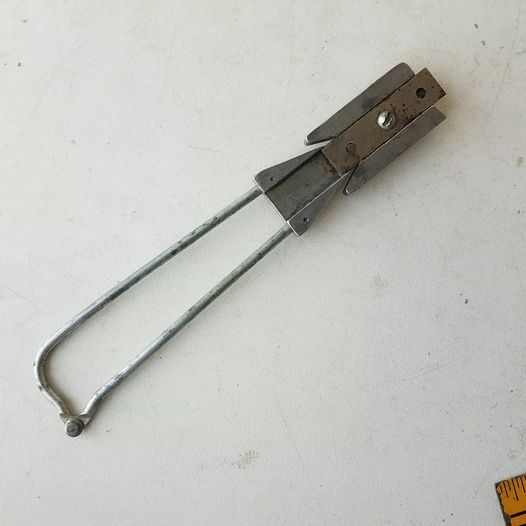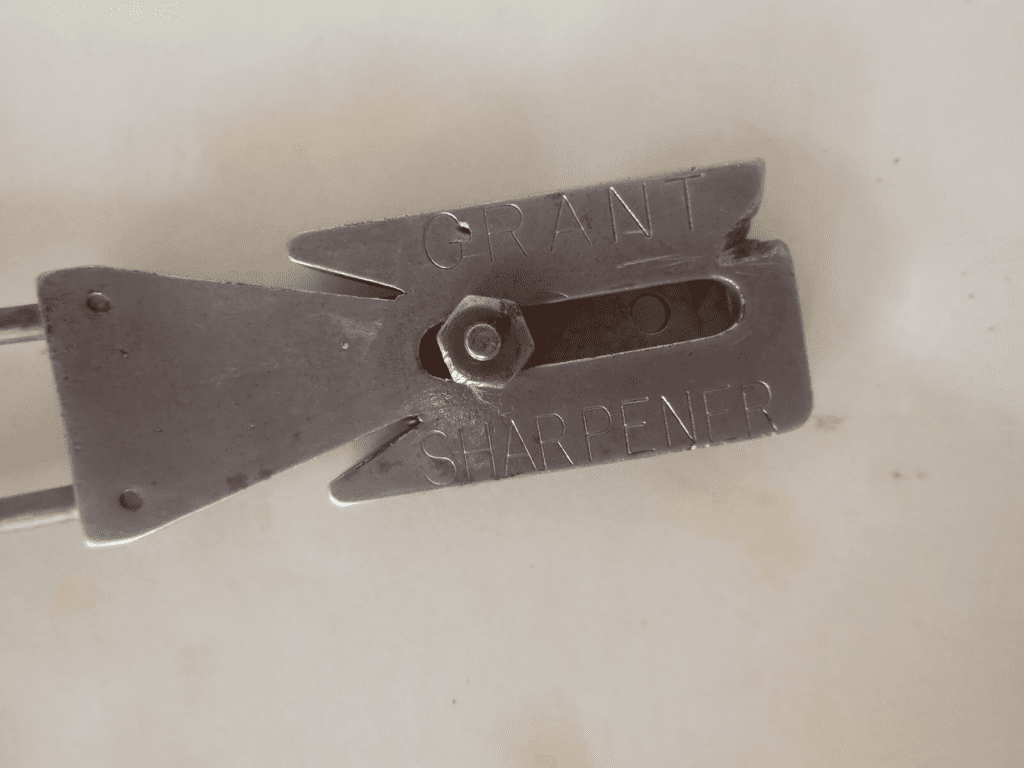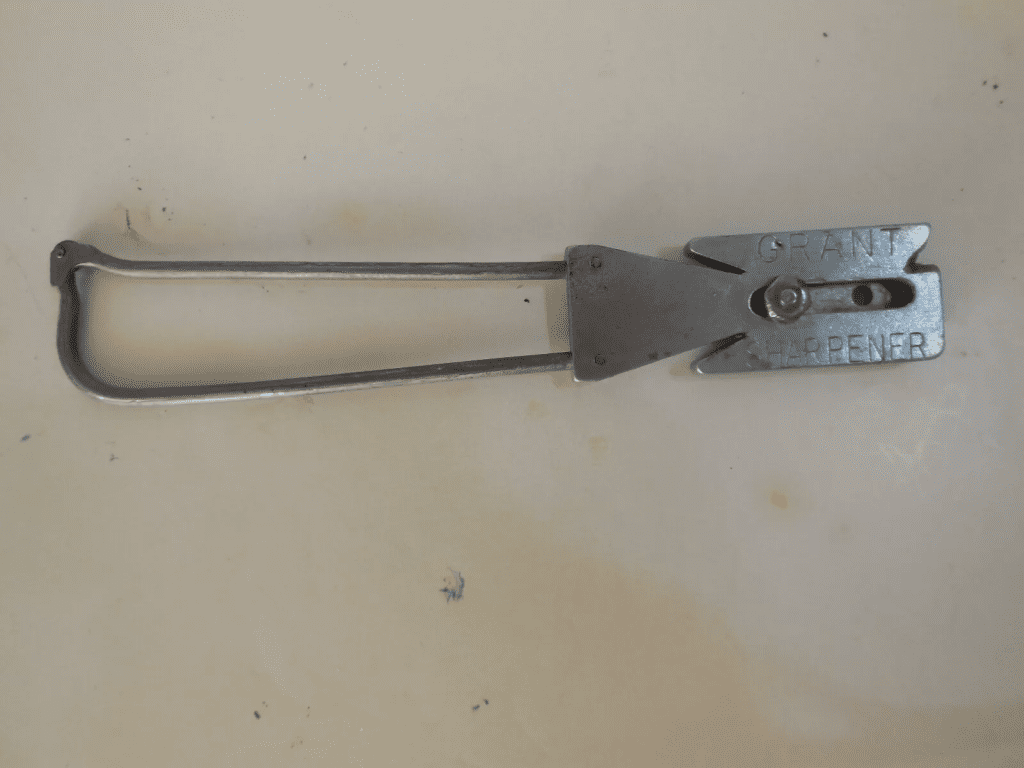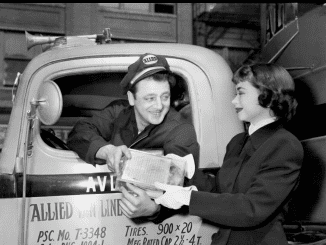The vintage knife and scissor sharpener is more than just a practical tool; it’s a piece of history that reflects the changing nature of home maintenance, craftsmanship, and self-sufficiency. Originating in the early 20th century, these sharpeners were essential household items, built to last and designed to keep knives and scissors sharp for everyday use. In this article, we’ll explore the fascinating history, usage, and enduring legacy of these vintage tools.
A Brief History of Vintage Knife and Scissor Sharpeners

In the early 20th century, as modern home and kitchen tools became more prevalent, the importance of maintaining them grew as well. Cooking and home upkeep were at the forefront of daily life, and having well-maintained knives and scissors was a necessity for any efficient household. This need sparked the creation of the first knife and scissor sharpeners, which allowed families to keep their tools sharp without the expense of professional sharpening services.
These early sharpeners were often made from durable materials like metal, wood, or even stone. They were built to withstand frequent use, often passed down from one generation to the next. As sharpening tools evolved, they became more than just practical items—they also reflected the craftsmanship and resourcefulness of an era that valued sustainability and long-lasting solutions for home maintenance.
The Evolution of Design and Function
The design of vintage knife and scissor sharpeners was straightforward yet effective. Many of these sharpeners featured a slot for knives and another for scissors, each with rough surfaces that ground the blade to a fine point. Some sharpeners were hand-cranked, while others required manual sliding of the blade across a coarse surface, often made from a rough stone or metal to reshape the edges.
What made these sharpeners particularly useful was their dual functionality. Many models not only sharpened the blades but also honed them. Honing helps maintain the sharpness of the blade between sharpenings, allowing users to extend the life of their tools even further. This was especially important during a time when replacing tools was often more expensive than simply maintaining them.
Vintage sharpeners weren’t just for chefs and homemakers, either. They were widely used by seamstresses, tailors, and artisans who relied on sharp scissors and blades for their daily work. These devices became an essential tool for anyone who needed a sharp edge to complete their tasks efficiently.
How to Use a Vintage Knife and Scissor Sharpener
Using a vintage knife and scissor sharpener was simple but effective. For knives, users would place the blade in the designated slot and pull it through the sharpener several times. The abrasive surface inside the sharpener would grind down any nicks or dull edges, leaving the blade sharper than before. For scissors, the process was much the same, with users sliding the blades through the sharpener until they regained their sharpness.
The ease of use made these sharpeners a valuable tool for anyone looking to maintain their kitchen or craft tools. Not only did they save time and effort, but they also eliminated the need for costly professional sharpening services. In an era where resourcefulness was key, the vintage knife and scissor sharpener became a staple in homes around the world.
Symbols of Self-Sufficiency and Sustainability
One of the most interesting aspects of vintage knife and scissor sharpeners is the way they symbolize a certain mindset: one of self-sufficiency and sustainability. In a time before electric sharpeners and disposable tools, households took pride in maintaining what they owned. Sharpening a knife or a pair of scissors wasn’t just a chore—it was part of a larger effort to care for one’s home and belongings.

These tools also speak to a period when people were more inclined to fix things rather than throw them away. Instead of replacing dull blades with new ones, they used sharpeners to extend the life of their tools. This resourcefulness aligns with today’s growing focus on sustainability and the desire to reduce waste. The resurgence of interest in vintage sharpeners reflects a broader cultural shift toward valuing the longevity of items we already own.
Why Collectors and Enthusiasts Love Vintage Sharpeners
Though modern sharpening tools are readily available, many collectors and enthusiasts are drawn to vintage sharpeners for their charm, craftsmanship, and historical significance. These sharpeners often feature unique designs that showcase the creativity and functionality of past generations. Collectors seek out sharpeners made from different materials, with intricate engravings or specialized features that make them stand out as relics of a bygone era.
Vintage knife and scissor sharpeners are not only valuable for their functionality, but they are also cherished as decorative items in kitchens and workshops. Whether hung on the wall or displayed on a shelf, these sharpeners serve as reminders of a time when craftsmanship and quality were paramount. For collectors, owning a vintage sharpener is a way to connect with the past and preserve a piece of history that highlights both practicality and artistry.
The Legacy of the Vintage Knife and Scissor Sharpener
Although electric sharpeners have largely replaced their manual counterparts, the legacy of the vintage knife and scissor sharpener remains alive and well. These sharpeners represent a time when household items were built to last, and they continue to serve as symbols of practicality and sustainability.

In recent years, the resurgence of interest in vintage and handmade goods has brought sharpeners back into the spotlight. Many people are now seeking out these vintage tools not only for their functionality but also for their historical and aesthetic value. They embody the idea that with proper care, tools can last a lifetime—a concept that resonates with the eco-conscious movement of today.
For those who appreciate well-crafted items with a history, vintage sharpeners remain a cherished addition to any collection. They remind us of the importance of maintaining what we have, a value that is just as relevant today as it was in the early 20th century.
Conclusion: A Timeless Tool with Lasting Significance
The vintage knife and scissor sharpener holds a special place in history, offering a glimpse into a time when resourcefulness and practicality were key components of daily life. These sharpeners are more than just tools; they are symbols of a bygone era that valued craftsmanship, sustainability, and self-sufficiency.
Whether you’re a collector, a home cook, or someone interested in preserving the past, vintage sharpeners offer a unique blend of functionality and nostalgia. As we continue to look for ways to live more sustainably, the lessons from these sharpeners—maintaining and valuing what we own—are more relevant than ever.
If you ever come across a vintage knife or scissor sharpener, consider the history and legacy it carries. It’s more than just a tool—it’s a testament to human ingenuity and the timeless importance of keeping our tools in top shape.


